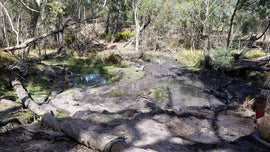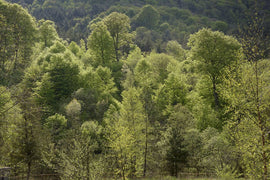Located just one hour south-east of Melbourne, in the heart of the Mornington Peninsula, the Devilbend Natural Features Reserve covers an area of 1005 hectares and contains two reservoirs formerly used to supply water to Melbourne. The reserve includes the Devilbend Reservoir, the largest inland water body on the Mornington Peninsula providing valuable habitat for waterbirds and shorebirds as well as opportunities for recreation.
In September 2006, most of the Devilbend reserve land was transferred to the Crown with the Devilbend Natural Features Reserve being gazetted on 8 March 2007. The land itself is a patchwork of remnant native vegetation, cleared areas surrounding the two reservoirs. In its new role, the area would largely be restored to forest and the reservoir itself would be resupplied with fish.
The landscapes and landforms of the reserve are intrinsic elements of the Country of the Boonwurrung people. The reserve is of considerable aesthetic, historical, scientific and social value to the Boon Wurrung people and has been assessed as being of state significance for its unique combination of cultural and environmental values near a population area.*
Greenfleet was called upon over a number of years to assist with the revegetation of land around the dam, much of which had been leased to cattle farmers. The revegetation comprised both direct seeding and planting of 75 hectares between 2008 and 2013. These have had great success in the early stages of their life, flourishing well in the wet weather Victoria has experienced and overcoming the challenges caused by weed competition and browsing.
Today, any visitor to the forests would witness a high insect activity, with sightings including spittlebugs, butterflies, dragonflies and Plague Soldier Beetles. Birds have also flocked into the planted area, included many forest birds such as Golden Whistlers, Noisy Miners, Crimson Rosellas and Fairy Wrens. Other birds noted included Welcome Swallows, Galahs, Sacred Ibis and Cockatoos. Kangaroos are actively using the planted site for shelter, with some young joeys observed among a small mob.
These forests not only provide habitat for native species, they are of great value to the local suburban community, who will benefit greatly from this patch of restored native bushland in the rapidly developing region.
This site is just one of many that Greenfleet has revegetated in conjunction with Parks Victoria. The ongoing relationship between the two organisations has seen more than 800 hectares reforested across Victoria. The revegetation projects have encompassed a complex range of conditions and vegetation types. Accordingly, each have different outcomes to achieve, individual challenges and unique qualities.
* Source: parkweb.vic.gov.au

Location Size
Planting Dates
Species
- Acacia mearnsii
- Acacia melanoxylon
- Acacia paradoxa
- Acacia verticillata
- Allocasuarina littoralis
- Allocasuarina verticillata
- Banksia marginata
- Bursaria spinosa
- Cassinia longifolia
- Davesia laifolia
- Eucalyptus cephalocarpa
- Eucalyptus obliqua
- Eucalyptus ovata
- Eucalyptus radiata
- Eucalyptus viminalis spp pryoriana
- Kunzea ericoides
- Leptospermum continentale
- Leptospermum myrsnoides
- Melaleuca ericafolia
- Ozothamus ferrugineus




